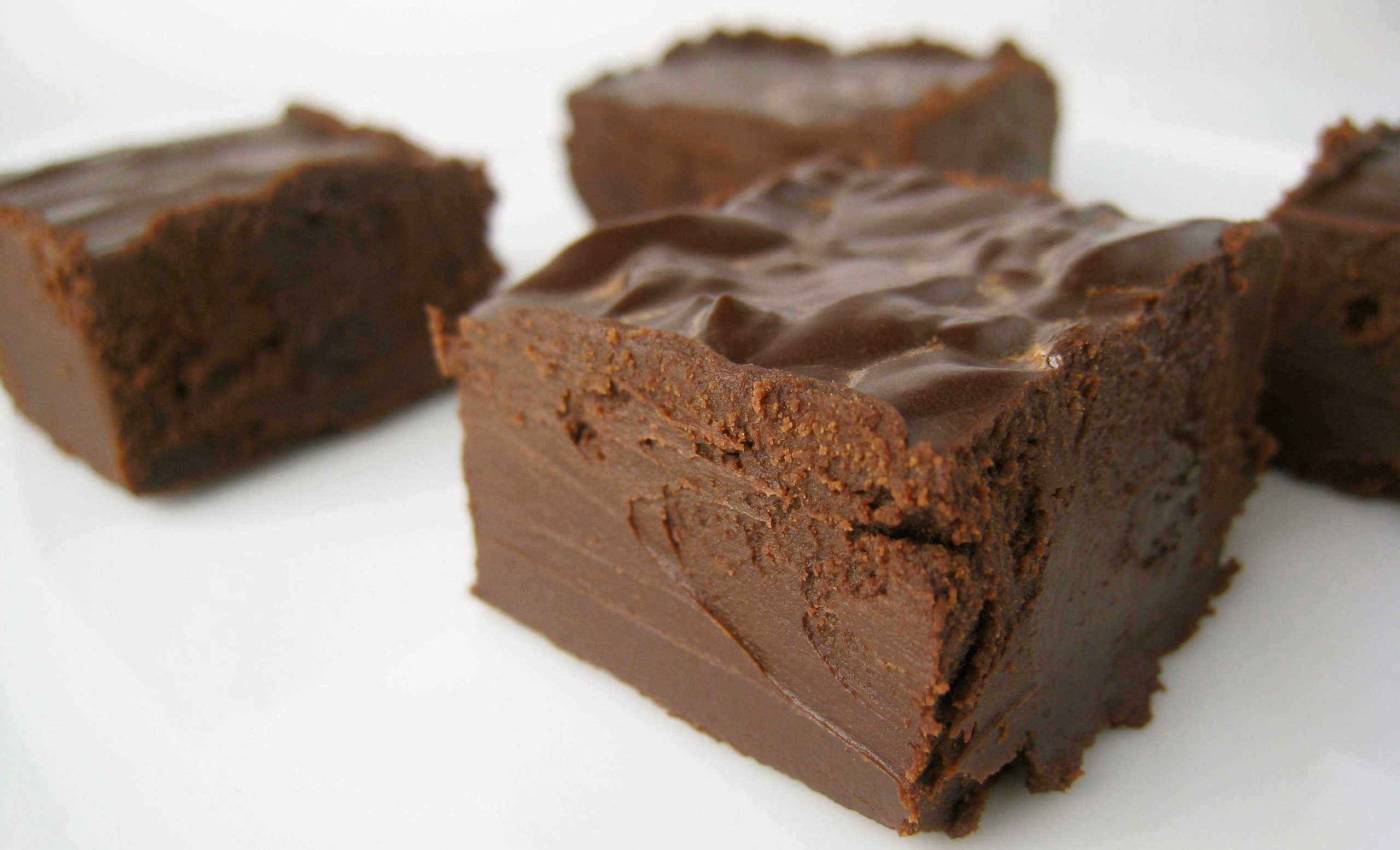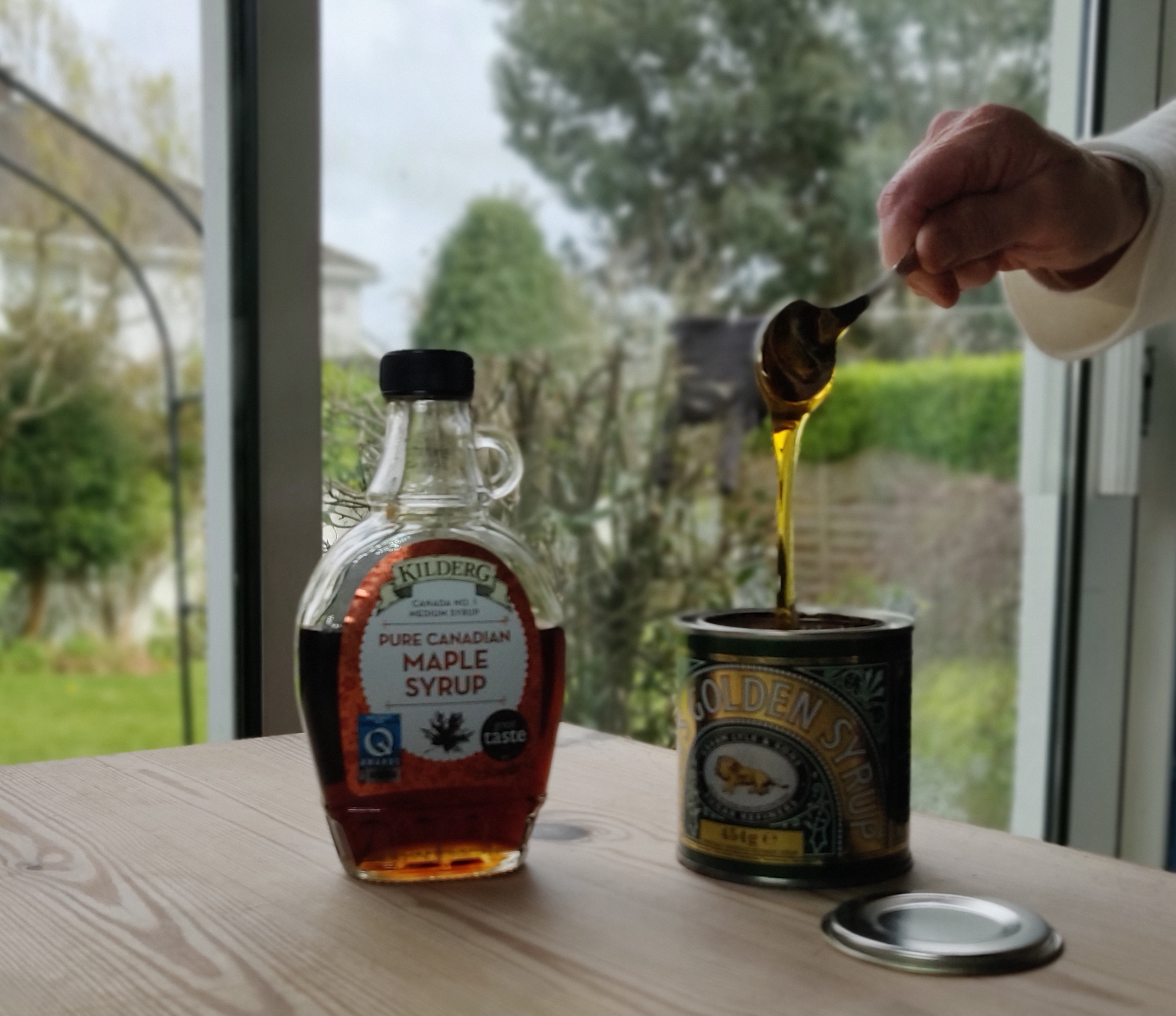Chocolate orange maple fudge
Peter Flynn
 🔗
🔗This makes one of the best fudges I’ve ever come across. The basic
recipe is adapted from the one in the Marks & Spencers
chocolate cookery book by adding more milk and sugar to
counterbalance the added chocolate, and making better use of the
orange.
Your support for our advertisers
helps cover the cost of hosting, research,
and maintenance of this site
Serves 20. Prep time: 5 minutes. Cooking time: 30 minutes.
Makes about 2lb
Ingredients
- 1 orange | washed to remove the carnauba wax
- 450 g light muscovado sugar (or a mix of caster and light Muscovado sugar)
- 1 × 250 ml can evaporated milk
- 75 g unsalted butter
- 120 ml maple syrup (see tip)
- 150 g dark chocolate [70% cocoa solids or above, and not too sweet: avoid Cadbury’s Bournville as it has way too much sugar]
Method
Pick a large saucepan with a heavy solid bottom so that it
won’t scorch.
Use a zester or microplane to scrape the zest off the orange into the pan as finely as possible, then use a
sharp metal edge to squeeze any orange oil out of the pale
layer of skin beneath. Do this with care and you should get
about half a teaspoonful of oil to add to the zest.
Add all other ingredients and stir over a low heat until
the sugar has dissolved and the chocolate has
melted.
Turn up the heat as high as the pan will stand without
burning the contents. This varies widely (and wildly) from pan
to pan and from stove to stove, so I’m afraid only you can
tell by experience how your own equipment behaves. A good
estimate is about 75% of your hob’s setting.
Boil until it reaches 240°F (116°C), the so-called ‘soft
ball’ stage.
I’ve never managed to make any fudge go into soft balls in
cold water as a test for this, so I eventually found a good,
reliable candy thermometer (in a late-nite supermarket in
Lowell, MA, of all places, thanks to the perseverance of
Brendan Quinn in driving me around at 11pm the night before I
was due to fly home!).
While it cooks, grease a tin to put it in.
Turn off the heat and stir vigorously until it begins to
change from glossy to dull. This is the point just
before it starts to crystallise, and you want it
to crystallise in the tin, not the saucepan.
This point (supposedly 110°F (43°C) but I’ve never dared
let it go that cold) is when the saturated solution of sugar
starts to crystallize the excess back out again, giving it
that smooth but slightly grainy texture of true fudge. Only
experience is any good here: a lot depends on the weather
(pressure and humdiddity). If you've neve made fudge before,
you’ll probably have to sacrifice a batch or two as toffee
before you get it right.
Quickly scrape it all into the greased tin before it
solidifies irretrievably. Once it has started to solidify, cut
into squares with a very thin, sharp knife.
Your support for our advertisers
helps cover the cost of hosting, research,
and maintenance of this site

